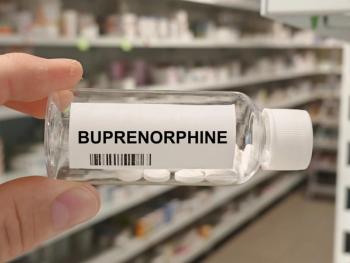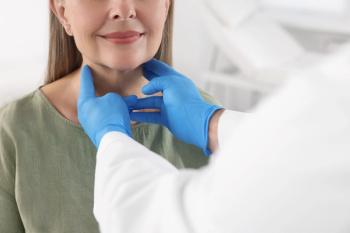
Amid Measles Outbreak, CDC Advises International Travelers to Receive MMR Immunization
Key Takeaways
- The CDC advises MMR vaccination for all international travelers due to recent US measles outbreaks, notably in Texas.
- Measles is highly contagious, with symptoms appearing 8 to 12 days post exposure and no available cure, emphasizing prevention through vaccination.
CDC urges all US travelers to get vaccinated for measles, mumps, and rubella (MMR) amid rising measles cases, emphasizing prevention as key to combating outbreaks.
The CDC advises that US residents traveling internationally should receive a measles, mumps, and rubella vaccination (MMR), regardless of the country they visit. This stance is somewhat different from a previous guideline, which recommended that travelers only receive the vaccine when visiting a country experiencing outbreaks.1 AP News reported that, although this significant update is likely the result of a Colorado outbreak in May that stemmed from an international flight landing in Denver, the updated guideline reflects current US-based outbreaks, such as the surge that originated in Texas.1,2
Measles is considered the most contagious virus, with symptoms including fever, cough, fatigue, and a distinct red rash covering the skin. These symptoms typically develop about 8 to 12 days following exposure to an infected individual. One infected person can pass the virus to up to 18 other people through exposure to nasal or throat secretions via coughs, sneezes, or breath. These viral particles remain contagious in the air and on surfaces for up to 2 hours after they leave.2,3
There is no cure for measles; individuals infected must allow the disease to run its course, which takes about 10 to 14 days. For these reasons, health care professionals emphasize that prevention—notably through MMR vaccination—is the key to reducing cases and minimizing infection risks.2,3
The Current US Outbreak
As of May 2, 2025, the Texas-based US outbreak has caused a total of 935 measles cases across the nation. Although most of the cases remain concentrated in-state, cases have been confirmed in at least 24 states, as well as across the borders into Canada and Mexico. The CDC has emphasized that cases of measles are likely underreported.1,2,4
“We do believe that there’s quite a large amount of cases that are not reported and underreported,” David Sugerman, MD, a senior scientist leading the CDC’s measles response, told NBC News. “In working very closely with our colleagues in Texas and in talking with families, they may mention prior cases that have recovered and never received testing or other families that may have cases and never sought treatment.”2
Concerningly, a recent research letter published in JAMA says that, as of May 14, 2025, there are 1001 confirmed measles cases reported by 31 jurisdictions, the most US-reported cases in a single year in nearly 3 decades, except for 2019. Most of these cases are occurring in unvaccinated children. The authors of this letter expressed their concerns that, if MMR vaccination rates continue to decline, measles is likely to return to endemic levels in the US.5
CDC’s Updated Travel Guideline
The CDC’s new travel notice advises that all US residents 1 year and older receive 2 doses of the MMR vaccine, administered at least 28 days apart. Infants aged 6 to 11 months should receive an early dose if traveling.1,7 Of note, if an infant has had 1 dose of the MMR vaccine prior to their first birthday, they are recommended to follow the routine childhood immunization schedule and receive another dose at 12 to 15 months and then a final dose at 4 to 6 years. If travelers experience symptoms—such as rash, high fever, cough, runny nose, or red and watery eyes—during or within 3 weeks following travel, they are encouraged to seek medical care.7
Now, experts—such as Ashley Darcy-Mahoney, a researcher at George Washington University’s nursing school—are concerned that transmission is “shift[ing] from localized outbreaks to transmission in transit.” For this reason, the CDC’s updated guideline is considered significant among health care professionals.1,7
Health Care Professionals Can Address Vaccine Hesitancy and Combat Misinformation
Amid the US outbreak, health system pharmacists can inform those within the ambulatory and acute care settings about the evidence-based role of vitamin A in acute measles infections.6 Regardless of their setting, pharmacists and other health care professionals are poised to help educate the public on the importance of measles prevention via MMR vaccination because outbreak awareness, public skepticism, and the spread of misinformation persist. A report by KFF reveals that about half of US adults (51%) and parents (47%) are at least “somewhat worried” about the current outbreak, with roughly 1 in 7 expressing that they are “very worried.”2,4 Crucially, all health care professionals can take steps to combat the increasing amount of misinformation present on social media platforms.6
Above all, building trust and fostering open dialogue are key to addressing vaccine hesitancy, rather than dismissing concerns outright. Pharmacists can take the time to listen, acknowledge patients’ fears, and provide credible, evidence-based information to meet patients where they are. This will help bridge gaps in understanding and encourage informed decision-making between health care professionals and patients.4,8
REFERENCES
1. Strobbe M. All international travelers should get measles vaccinations, CDC says. AP News. June 2, 2025. Accessed June 4, 2025. https://apnews.com/article/measles-international-travel-vaccine-980fdb9fcf8522fed01d23427eba4429
2. Gerlach A. Measles Cases Climb to 800 in United States as Outbreak Spreads Across Borders. Pharmacy Times. Updated April 21, 2025. Accessed June 4, 2025. https://www.pharmacytimes.com/view/measles-cases-climb-to-800-in-united-states-as-outbreak-spreads-across-borders
3. Gerlach A. Measles Outbreak in West Texas Marks Largest Surge in 30 Years. Pharmacy Times. February 27, 2025. Accessed June 4, 2025. https://www.pharmacytimes.com/view/measles-outbreak-in-west-texas-marks-largest-surge-in-30-years
4. Gerlach A. Measles Update: The Public’s View and How Pharmacists Can Combat Misinformation. Pharmacy Times. May 2, 2025. Accessed June 4, 2025. https://www.pharmacytimes.com/view/measles-update-the-public-s-view-and-how-pharmacists-can-combat-misinformation
5. Dong E, Saiyed S, Nearchou A, Okura Y, Gardner LM. Trends in County-Level MMR Vaccination Coverage in Children in the United States. JAMA. Published online June 02, 2025. doi:10.1001/jama.2025.8952
6. Haas CE. Evidence Over Anecdotes: The Misuse of Vitamin A During Measles Outbreaks. Pharmacy Times. May 15, 2025. Accessed June 4, 2025. https://www.pharmacytimes.com/view/evidence-over-anecdotes-the-misuse-of-vitamin-a-during-measles-outbreaks
7. US Centers for Disease Control and Prevention. Travelers’ Health — Travel Notices (Global Measles). Accessed June 4, 2025. https://wwwnc.cdc.gov/travel/notices/level1/measles-globe
8. Angelo LB, Knockel LE. Measles on the Move: Guidance for Pharmacists During Outbreaks. Pharmacy Times. April 24, 2025. Accessed June 4, 2025. https://www.pharmacytimes.com/view/measles-on-the-move-guidance-for-pharmacists-during-outbreaks
Newsletter
Stay informed on drug updates, treatment guidelines, and pharmacy practice trends—subscribe to Pharmacy Times for weekly clinical insights.


















































































































































































































